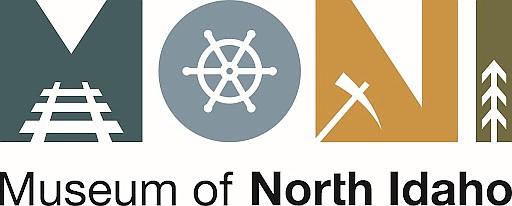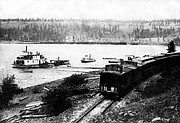Moving History Forward
Lake Coeur d’Alene has been the center of our local economics and culture for as long as people have lived here. During much of the 19th century the lake’s use as a waterway was central to everyone’s way of life. Central to this was the steamboat. Lake Coeur d’Alene plus both the Coeur d’Alene and St. Joe rivers held the distinction of having the most intense steamboat activity west of the Great Lakes until the railroads arrived.
Credit for building the first steamboat on Lake Coeur d’Alene goes to Peter Sorenson who had immigrated with his brother Lars from Norway. He was a trained boatbuilder. The quartermaster of the new Fort Coeur d’Alene had sent out the word that he needed a competent boat builder. Peter answered the call and arrived here in 1879.
He named the first boat the Amelia Wheaton, after the daughter of the second commandant of Fort Coeur d’Alene, Col. Francis (Frank) Wheaton. Col. Wheaton was embroiled in a local legal issue which may have been the reason for his being replaced by Gen. Carlin after two years. He was married three times and had four children, only one living longer than the Colonel.
Col. Wheaton named his daughter Amelia after his mother. Amelia was born in 1867 and died in 1885, five years after her namesake boat was launched in 1880. Little is recorded regarding her short life. She did live in Bonanza, Idaho (later renamed Huetter) while her father was at the Fort. She was buried in Utica, New York.
The builder, Peter Sorenson, was named the Captain of the boat. Since the owner of the boat was the U.S. government, the boat’s primary duties were to keep the Fort, now renamed Fort Sherman, resupplied. Fortunately, there was enough down time to allow the Captain to spend days accurately mapping the Lake’s coves, headlands and shores. Sorenson named many of the bays on the lake. The U.S. Government sold the boat in 1890 to one of the steamboat companies doing business on the Lake and it continued to be serviceable for transport of lumber, ore and goods.
She was also used as pleasure boat for excursions, which on occasions carried as many as 500 sightseers to various points of interest on the Lake.
She remained intact until her superstructure was removed and became the topside for the steamer St. Joseph. Later Amelia Wheaton’s machinery was moved to the St. Joseph which was eventually renamed the Elk in 1896. The Elk was moved to Lake Pend Oreille in 1900. There she was renamed twice, but sadly sustained such a destructive fire that she was decommissioned and abandoned.
The cost of membership in the Museum of North Idaho (MoNI) starts as low as $30.00 and is identified as the “Amelia Wheaton.” The remaining membership levels are also named after legendary Lake Coeur d’Alene steamboats. These boats are the “Flyer,” “North Star,” “Idaho,” and the “Georgie-Oaks.” They will be the subjects for future columns published in this spot.
The Museum’s ability to function depends on a broad membership base. We urge The Press’s readership to become members on a yearly basis. A large membership base has many advantages, to include the ability to be more successful in winning grants for non-profit community-based institutes like the Museum.



